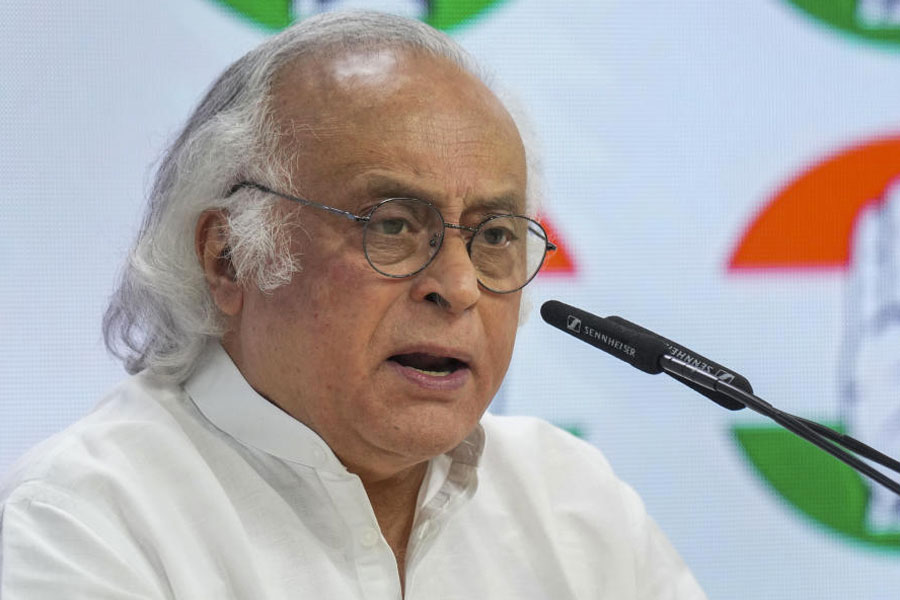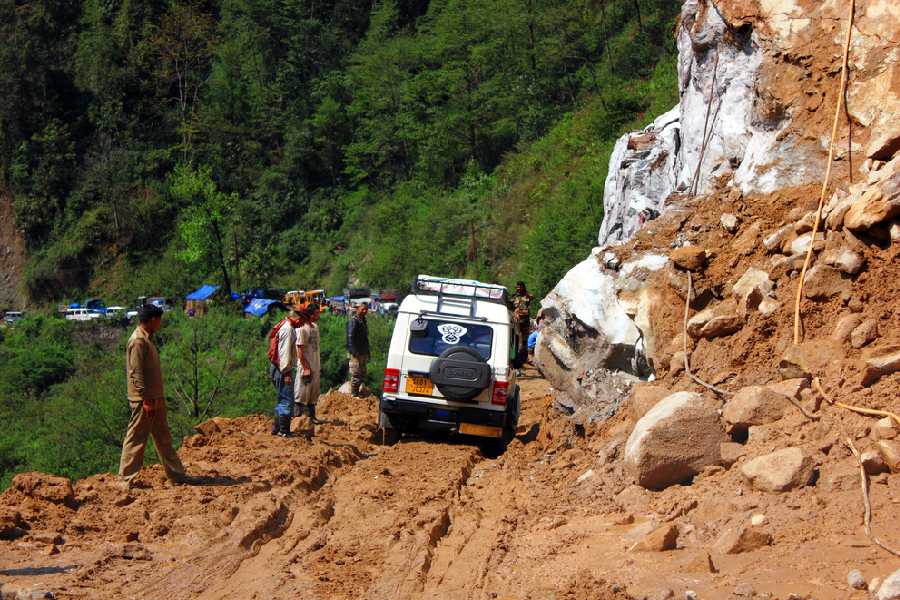The Centre’s extension of the ceasefire with the National Socialist Council of Nagalim (Isak-Muivah) to all Naga-inhabited areas had sparked violent protests, particularly in Manipur valley, which is home to the Meiteis. People targeted politicians of all hues. Government establishments were razed. People were out in the streets and the protest gained popular support. It was an emotive issue as far as the Meiteis were concerned. They believed that the Centre, which was talking peace with the NSCN(I-M) leadership, was bending over backwards to please Th. Muivah and Isak Chisi Swu.
Any remote possibility about redrawing the map of Manipur will lead to bloodshed. This is obvious from the letters and pamphlets circulated to all journalists of the Northeast by a group calling itself the “People’s Movement Manipur and North Eastern States of India”. Although Assam and Arunachal Pradesh also share boundaries with Nagaland, the delimitation of territories by people who knew little of what they were doing, left a big chunk of tribes calling themselves “Nagas” in both the states. The Tirap-Changlang districts of Arunachal Pradesh are largely home to the Wancho tribe, who are believed to be original Konyaks.
It appears from oral historical accounts that other tribes living in the hills of Manipur and calling themselves Puimei, Rongmei, Liangmai and Zeme occupied a specific area. When the British came, the Puimei and Rongmei tribes were clubbed together and called Kabui, whereas the Liangmei and Zeme were called Kacha Naga. These people do not know why and how they derived these nomenclatures, although today they are collectively referred to as the Zeliangrong tribe. The common links and mutual interests of these tribes were completely disregarded by the British. Hence they find themselves in three states —Manipur, Nagaland and Assam. These people do not call themselves Nagas. Neither do the other smaller tribes inhabiting Manipur today. It is, therefore, not clear whether these smaller tribes will find their dreams fully articulated within the concept of Greater Nagaland. Might they not start another revolution asking for a separate homeland as well? After all they, too, were forcibly integrated into the Naga consciousness.
For reasons of safety in numbers the above tribes are today coerced by circumstances to affiliate themselves with the larger groups and to also call themselves Nagas. Perhaps this stemmed from the fact that the tribes were unable to identify themselves with the Meiteis from the valley who are, by and large, Vaishnavite Hindus and who practise some form of caste system. They found themselves having more cultural affinity with the other tribes such as the Thangkhuls. It is doubtful if the Thangkhuls themselves who occupy the Ukhrul District of Manipur were Nagas and if they were of the same origin or stock as the so-called Naga tribes of present Nagaland. In fact, the Nagas residing in Nagaland proper have often been heard to dispute the claim of Thangkhuls to be Nagas. Be that as it may, the Thangkhuls are today at the forefront of the struggle for autonomy/sovereignty. Their leader Muivah has been the prime actor in the dialogue with the Centre.
Meiteis are naturally peeved at the prospect of having their state carved out in order to accommodate the dream of a greater Naga homeland. Nobody is interested in going back to history or to rewrite it. History says that tribes living in the areas surrounding the Manipur valley paid nominal tribute to the Maharajahs of Manipur. That Manipur should for administrative reasons be demarcated as it is today is no fault either of the Meiteis or of the tribes inhabiting it.
The pamphlet that is circulated today questions the wisdom of the Centre in nurturing plans of delimiting the Meiteis to only the valley districts, that is, Imphal West, Imphal East, Thoubal and Bishenpur districts, the Kukis to the stretch of land around the foothills and the so-called Nagas to the major share of land — Ukhrul, Senapati, Tamenglong, Chandel districts and others Further, the pamphlet says there are 29 known tribes in Manipur alone. So are each of these tribes going to be allotted a homeland within Manipur? A good question indeed and fraught with uncertainties.
The Meiteis call all non-tribals outsiders and non-Meiteis as Mayangs. The tribes are also included among the Mayangs. It is futile, therefore, to speak of any kind of psychological and emotional integration between Meiteis and their tribal neighbours. Merely being residents of the same state is not enough to make people feel one. This has been the deep-seated problem of Manipur. Whether the Meiteis like it or not, development has been valley-centric. The hills have been left unattended. It is true that the hills have their own representative in the state legislature and that they, rather than the Meiteis, are to blame for underdevelopment. But that argument is without logic considering that legislators, once elected, are no longer interested in issues but in feathering their nests. And feathering is easier in the valley where most of them are now living.
The tribes claim to have been negatively discriminated against. For the Meiteis not to admit this would be nothing short of a lie. It must also be admitted that life in the valley is far easier than it is in the hills. Educational centres are located there. So also are health and trade centres. Meitei friends themselves say that even if they were given a choice to buy land in the hills they would not do so because life is harder and more exacting there. It is a different question that certain land regulations are being enacted, allowing purchase of land in hills areas for public purpose. The tribes believe this is one way of depriving them of their land. The issue of land is always sentimental. Land provides a home and space for farming. It is a form of identification for the tribes. Not owing land is a frightening prospect. The tribes reason that once land in the hills becomes available to people from the valley, then being landless will become a real issue.
To resolve the conflict in Manipur will take more than just angry protests. Certain wrongs committed by either group have to surface. There must be a ready gesture for accommodating the needs and aspirations of both sides without anyone having to lose too much face. The pamphlets circulating today are full of anger and revenge. Maybe that is also needed since anger that is unexpressed is also bad for the mind and soul. But having let off steam it is time for the intelligentsia of Manipur both in the hills and the valley to sit across the table and talk.
A people-to-people contact is of greater importance than dialogues at the level of governments. More often than not governments are the last to understand the deep-rooted fears of people. They are more interested in quick settlements that arouse more pain and hurt in the long run. The feelings of those tribes who do not wish to be called “Nagas” also deserve to be given a voice to. Ignoring them now is likely to create problems in the future.










